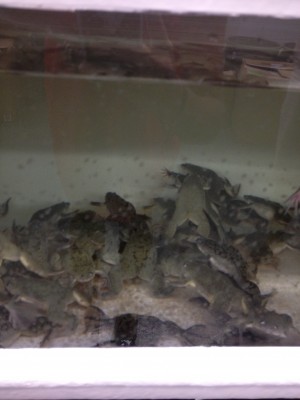Have you been itching for more on the MBL? We’re back with more about the research! Today we’re looking into the research being done under Marko Horb on the Xenopus. What is a Xenopus? you may ask. A Xenopus is an aquatic frog that is helping scientists understand regeneration.

The Xenopus possesses some regenerative capabilities, like the ability to regenerate limbs, tails, and the lens of its eye. The National Xenopus Resource at the MBL is a national stock center for the frogs and provides them to researchers, who study cellular and molecular processes in the frogs to learn how regeneration works. The research may one day lead to understanding how regeneration might be possible in humans.
What else can you do with the frog? The Xenopus has a similar structure of liver and pancreas to that of a human. This enables researchers to look into transdifferentiation of cells. It is possible to take liver cells, which will regenerate in a human body naturally, and convert them into pancreatic cells. Right now, research is being done to explore the mechanism taken during the process of transdifferentiation so that liver cells can be directed to making specifically insulin-producing cells, known as beta cells. The biggest struggle here is directing the cells to become only beta cells and not other pancreatic cells, such as glucagon-producing alpha cells. In the lab at the MBL, they can stain the different pancreatic cells and see what controls the production of each type of cell, however the struggle will be finding the exact pathway to insulin-producing cells and creating a way to always have it follow this path in the future. Using liver cells instead of stem cells or injecting insulin has the potential to save the lives of diabetics. In the future, once this process is set, diabetics might have the ability to go in once a year, have a small piece of their liver removed and converted to insulin cells that will last them the rest of the year instead of injecting insulin on a daily basis.
Come back next time and learn about the work done by Jennifer Morgan at the MBL on lampreys! Let us know what you think @TRA360!
